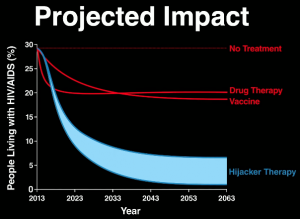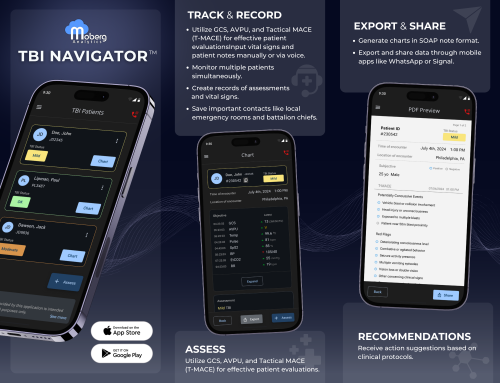With support from USAMRDC’s Military Infectious Diseases Research Program (MIDRP), the lab of Dr. Leor Weinberger at the Gladstone Institutes at the University of California, San Francisco continues to develop and test Therapeutic Interfering Particles (TIPs). TIPs are a novel therapeutic paradigm, first proposed by Weinberger over 20 years ago, that have the potential to reduce viral transmission and disease. The group is preparing for a clinical trial using TIPs as an antiviral therapy against human immunodeficiency virus (HIV) following successful pre-clinical trials in large animal models.
HIV, which infects cells of the immune system such as helper T cells, macrophages, and dendritic cells, is significant threat to service members deployed overseas and a source of regional instability in areas of U.S. force protection. Deployment barriers, particularly in resource-limited settings, and the genetic diversity (mutation) of HIV present major obstacles to reducing HIV prevalence using conventional drug therapies and potential vaccines. Currently, HIV requires lifelong treatment using antiretroviral therapy. The fundamental problem we face with viruses is that viruses do two things very well…they mutate, and they transmit. The medical tools that we have to combat viruses (pharmaceuticals, biologics, vaccines) do neither of these two things, so we are constantly playing catch-up.
The TIP concept is based on natural ‘defective’ versions of viruses first observed by the Danish virologist Preben von Magnus in the 1940s. In the 1970s, scientists attempted to exploit these so-called defective interfering particles (DIPs) for therapeutics but, for various reasons, the efforts failed. In a 2003 paper, Weinberger proposed quantitative criteria to engineer DIPs into therapeutics that mutate and transmit laying the foundation for what would become known as TIPs – engineered DIPs that intracellularly outcompete wild-type virus – a term he coined in a follow-up 2011 paper. The biological mechanism is highlighted in a recent TED Talk. Overall, this therapy functions by hijacking the cell to create therapy instead of virus.

For their project funded through MTEC, the Weinberger Lab is evaluating the safety and efficacy of TIPs in humanized mouse models and non-human primates. Preclinical data showed that TIP treatment did not trigger an inflammatory response, as desired. Additionally, the team has extremely promising results in non-human primate models.
Previous epidemiological analyses projected that TIPs could significantly outperform existing and proposed interventions (e.g., antiviral therapies and vaccines) and lower HIV/AIDS prevalence below 1% within 30 years. Thus, TIPs have the potential to reduce disease burden at the population level. In addition, TIPs could also complement current HIV therapies such as antiretroviral therapy.
 The Weinberger Lab performed an epidemiological analysis that showed the projected impact of TIP intervention on HIV/AIDS disease prevalence over a 50-year period. Overall, even TIPs given to a small fraction of the population have the potential to significantly reduce disease burden at the population level.
The Weinberger Lab performed an epidemiological analysis that showed the projected impact of TIP intervention on HIV/AIDS disease prevalence over a 50-year period. Overall, even TIPs given to a small fraction of the population have the potential to significantly reduce disease burden at the population level.
Importantly, the TIP concept is broadly applicable to other viruses. Recently, the Weinberger lab reported on the identification of a TIP for SARS-CoV-2 – also funded through MTEC – that significantly reduces disease in hamsters. The HIV project was funded through MTEC’s Request for Project Proposals for MIDRP’s Prototype Innovation Program (Solicitation #19-10-MID-PIP) while the SARS-CoV-2 project was funded through MTEC’s Request for Project Proposals for treatments with the potential application to prevent COVID-19 infection (Solicitation #20-09-COVID-19_Treatment_MIDRP).
About The Gladstone Institute:
Gladstone is an independent, nonprofit life science research organization closely affiliated with the University of California San Francisco (UCSF) and located at the UCSF Mission Bay campus. Gladstone has created a research model that disrupts how science is done, funds big ideas, and attracts the brightest minds to overcome unsolved diseases through transformative biomedical research. The Weinberger Lab has a long history of discovery in cellular and viral gene regulation and engineers new first-in-class therapeutics.





